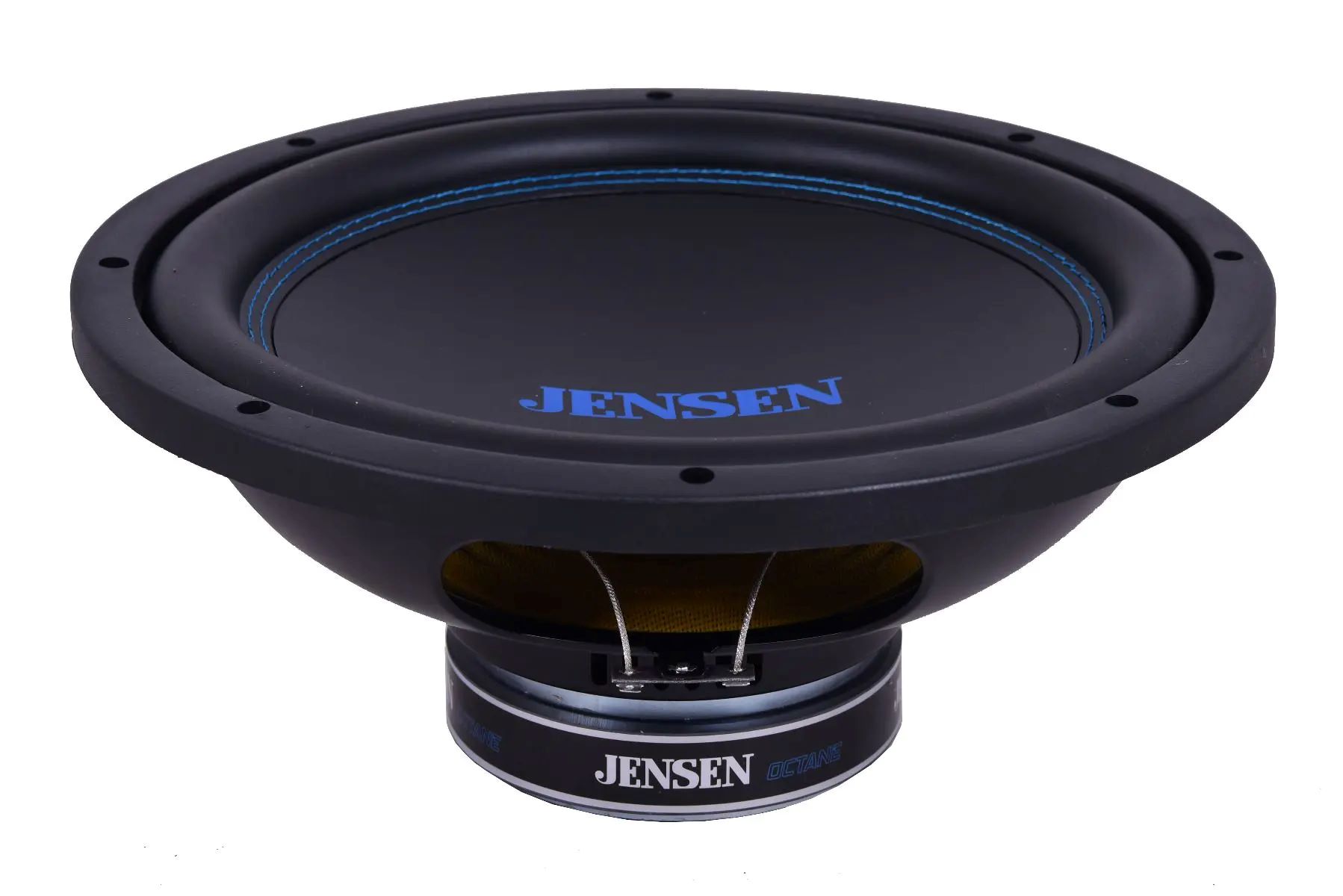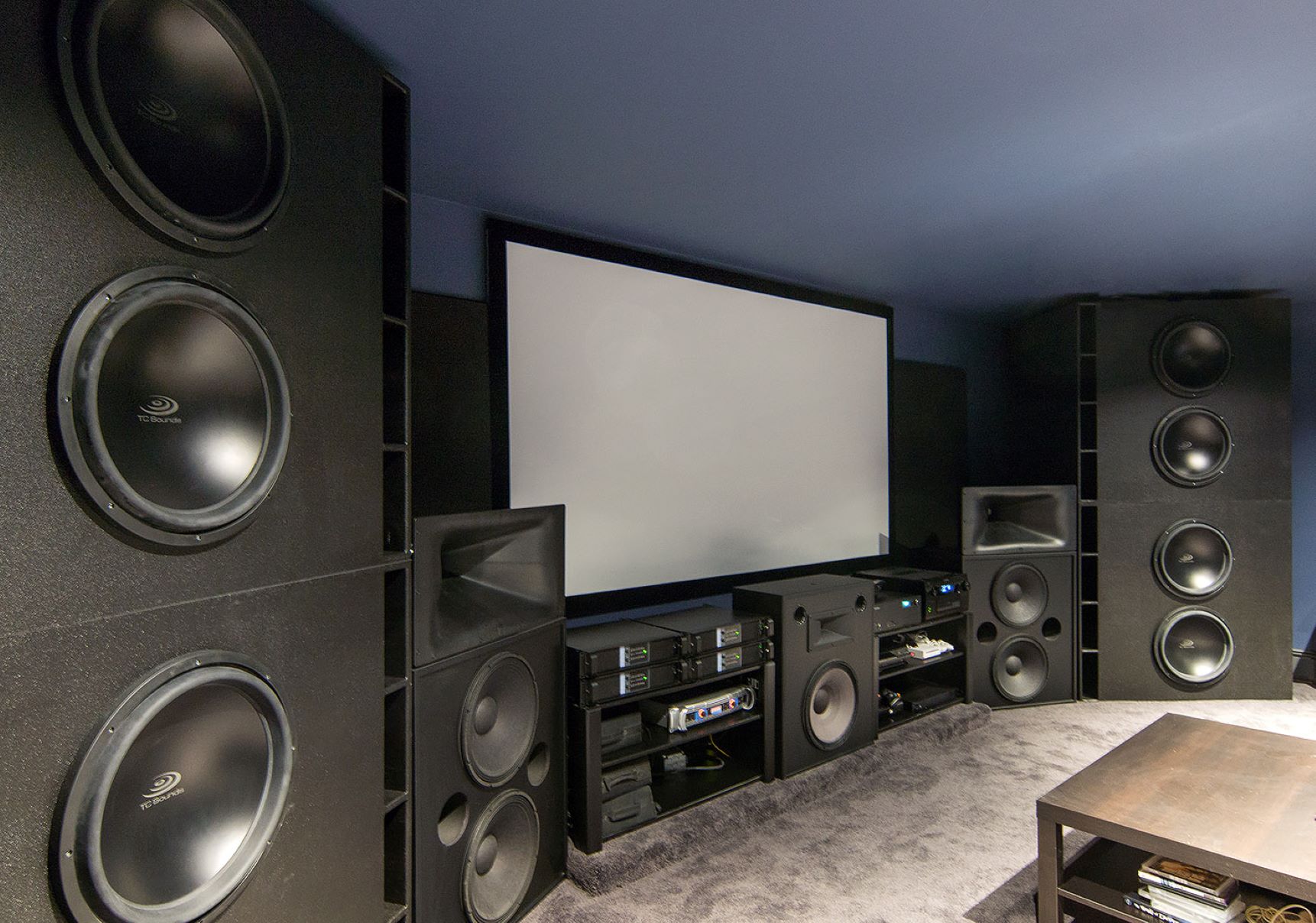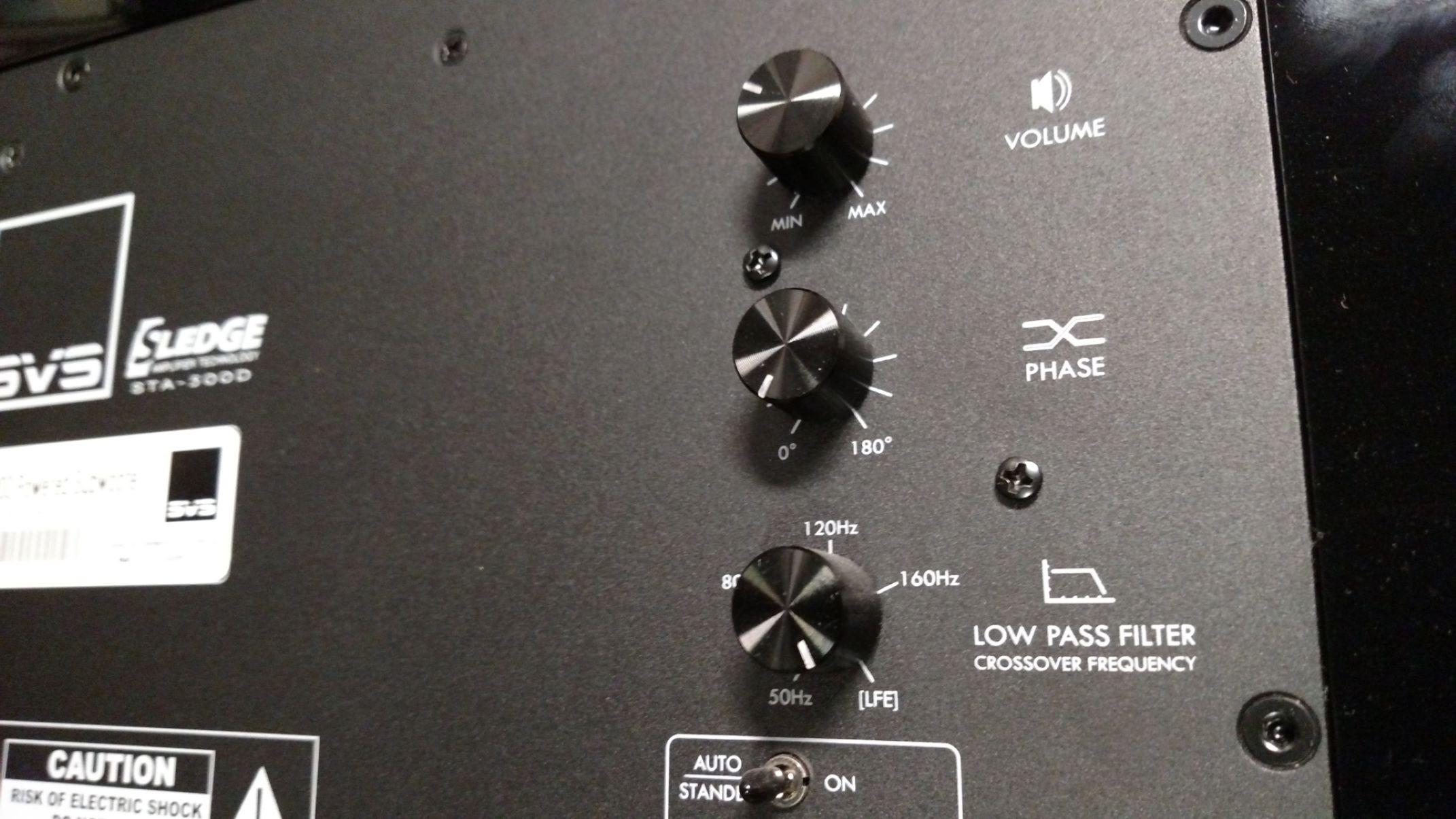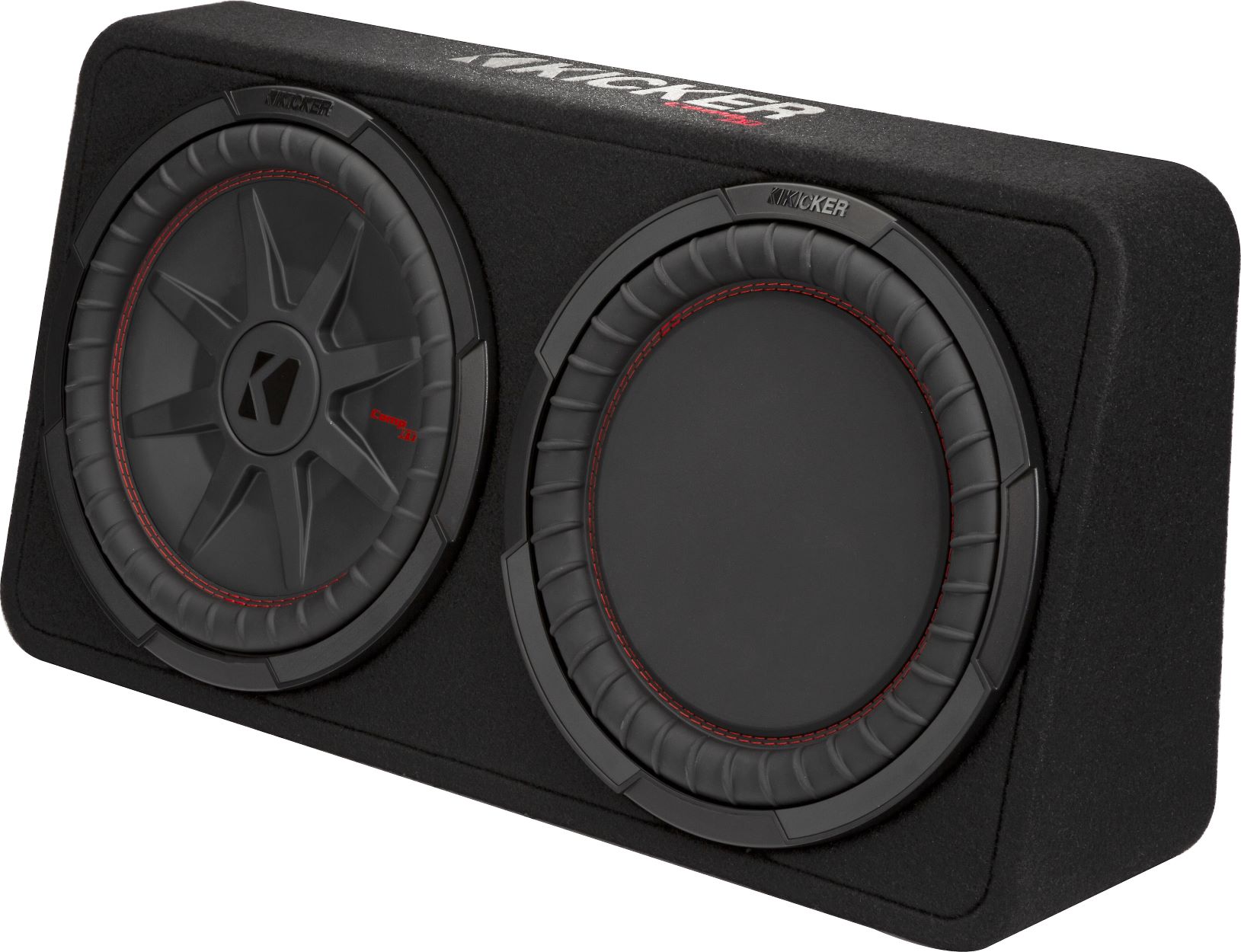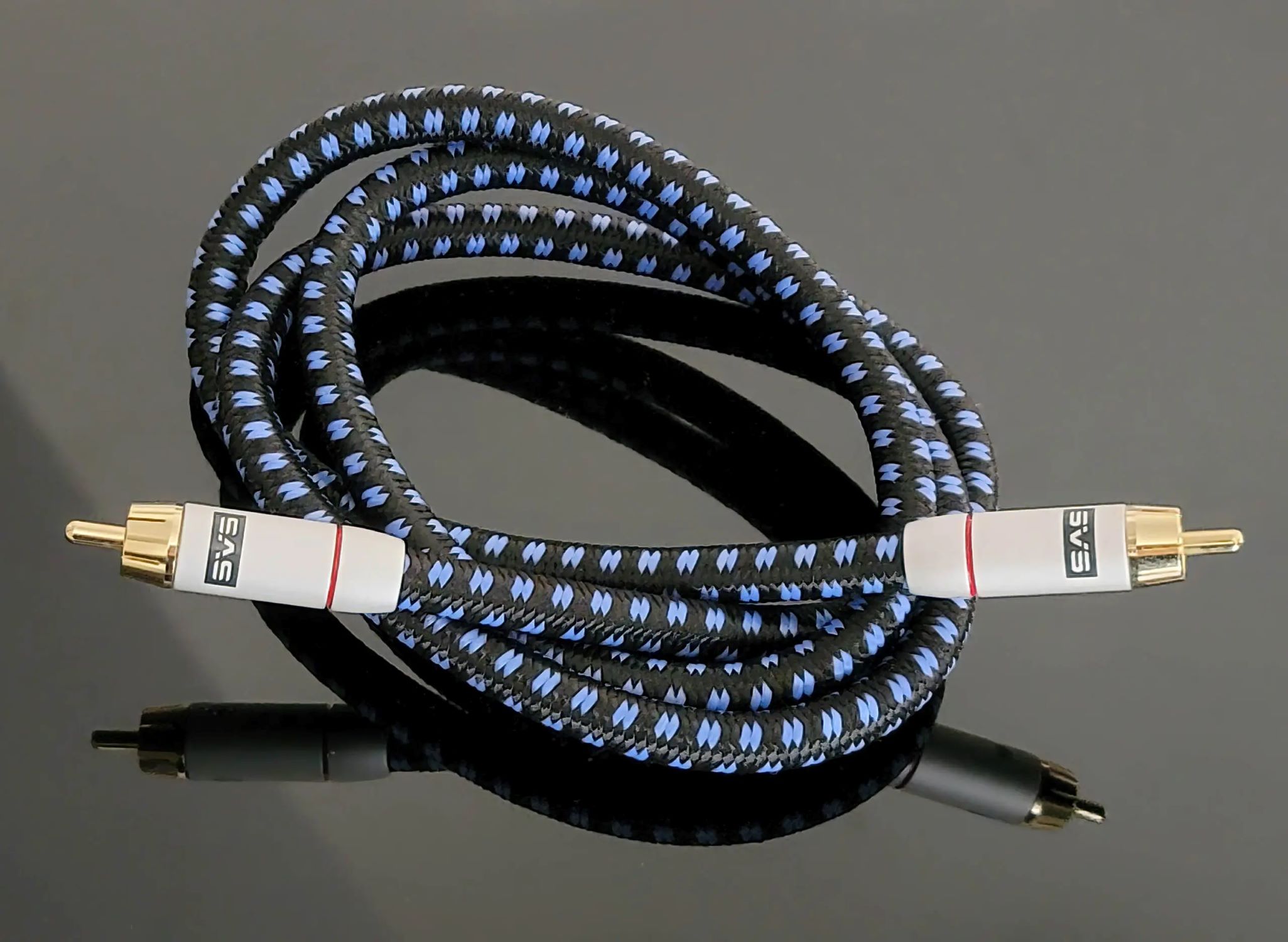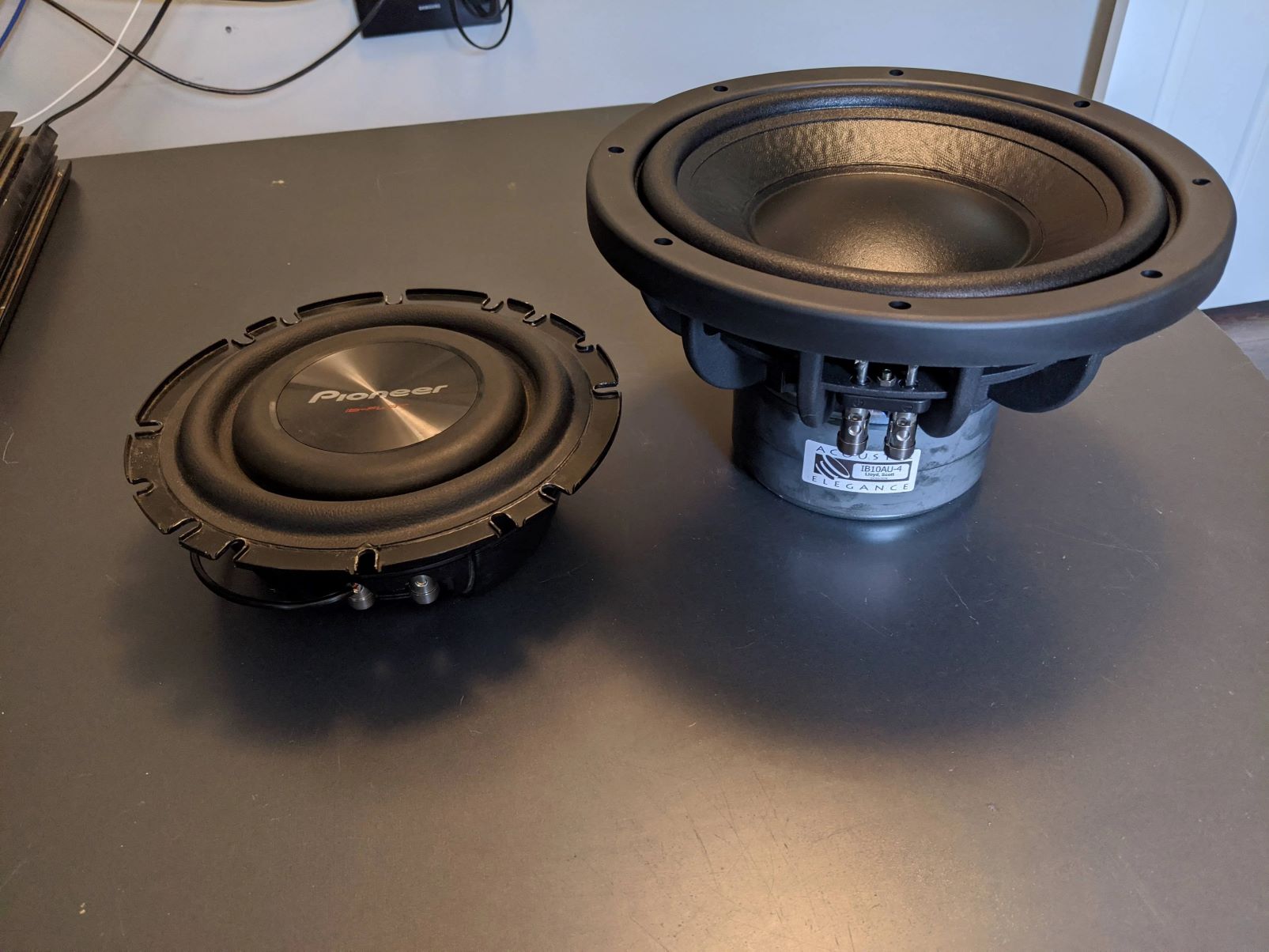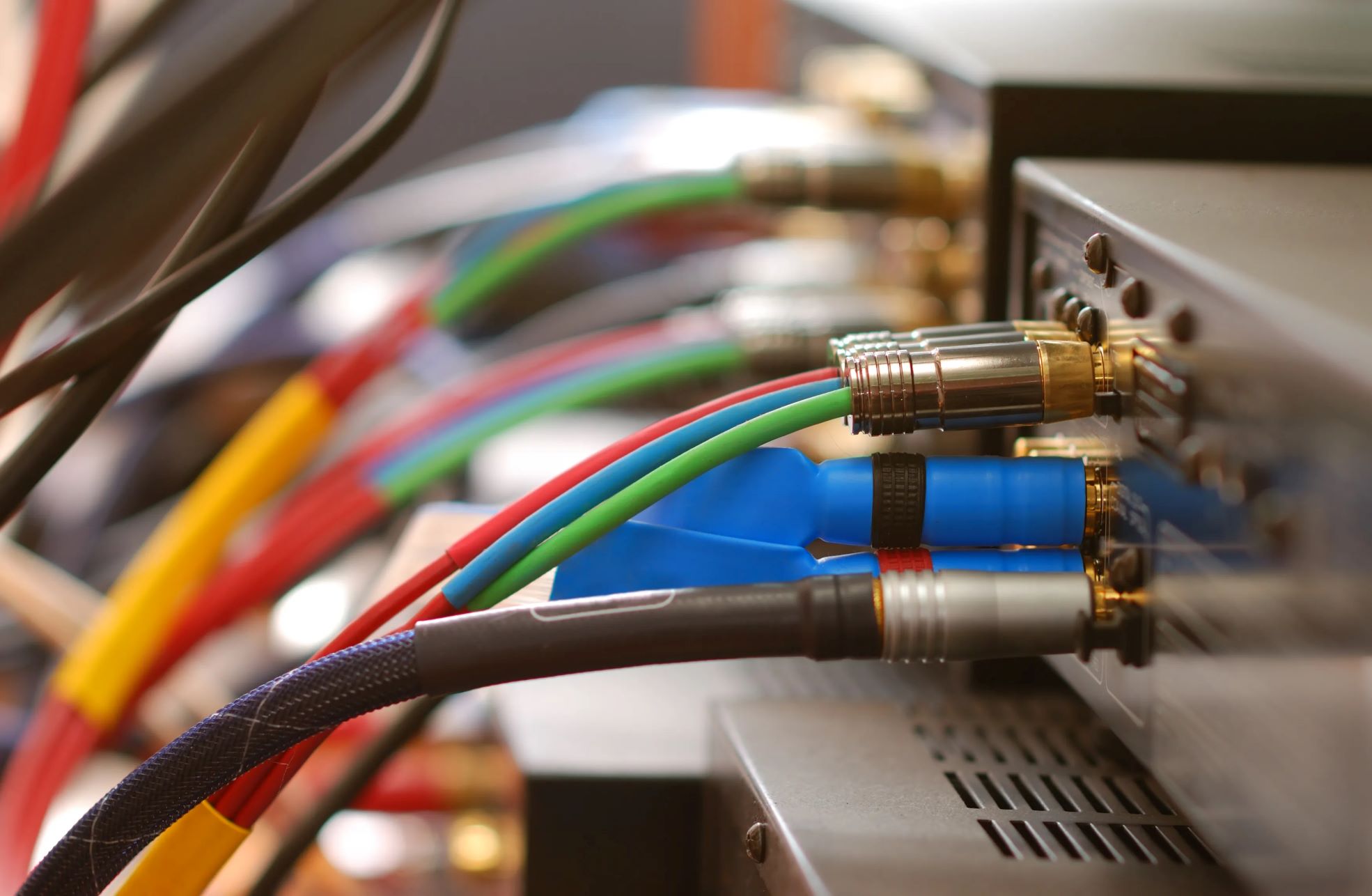Home>Devices & Equipment>Subwoofer>What Is A Servo Subwoofer
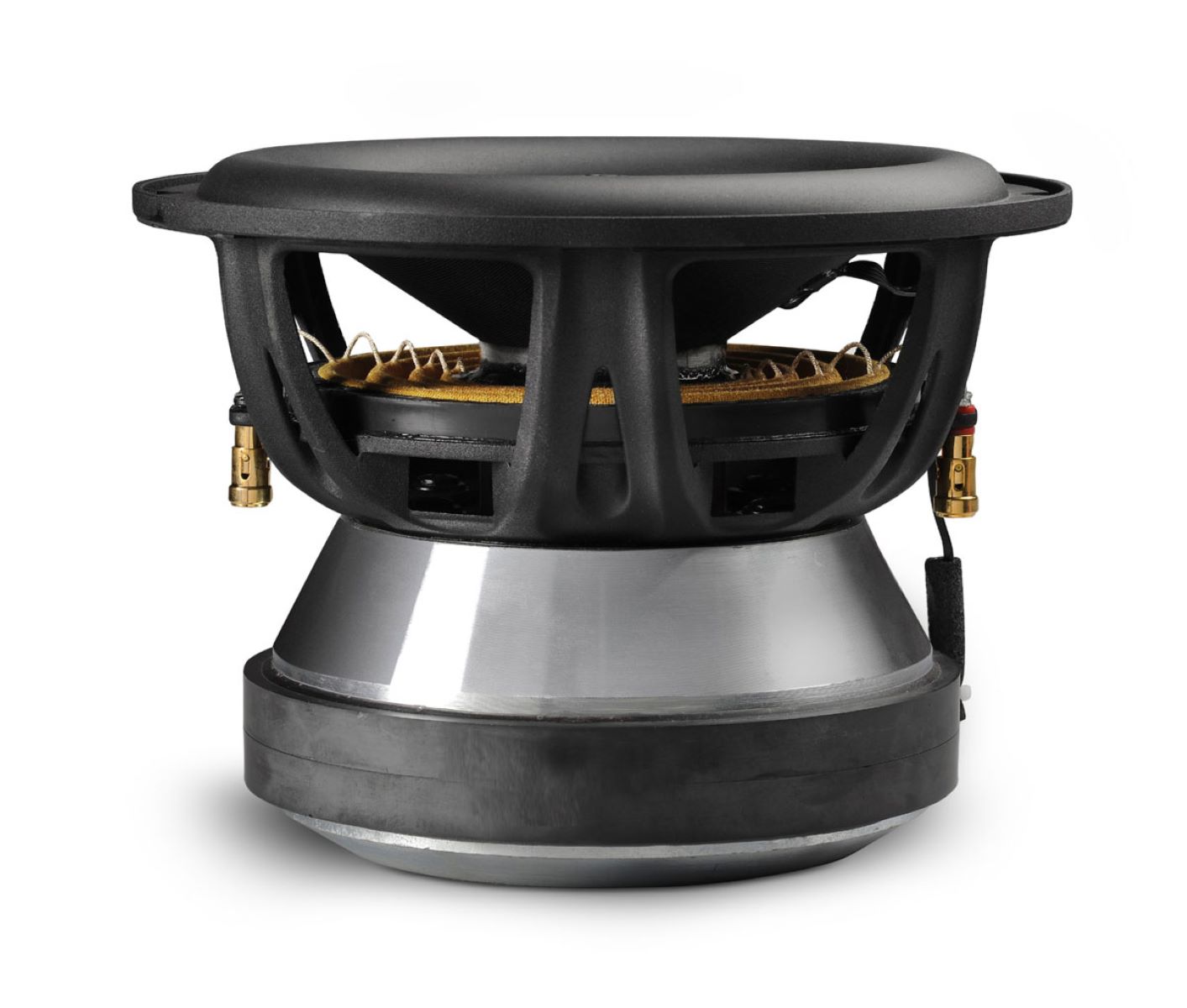

Subwoofer
What Is A Servo Subwoofer
Published: January 21, 2024
Discover what a servo subwoofer is and how it enhances your audio experience. Explore the benefits of this powerful subwoofer technology for your home theater setup.
(Many of the links in this article redirect to a specific reviewed product. Your purchase of these products through affiliate links helps to generate commission for AudioLover.com, at no extra cost. Learn more)
Table of Contents
Introduction
Welcome to the world of deep bass and immersive audio experiences! In this article, we will delve into the fascinating realm of servo subwoofers. Whether you’re a music enthusiast, a home theater lover, or an audio professional, understanding how a servo subwoofer works can greatly enhance your listening pleasure.
A servo subwoofer is a specialized type of subwoofer that uses servo technology to deliver accurate and powerful low-frequency sound reproduction. It is designed to reproduce the deepest bass frequencies with precision and clarity, adding a new dimension to your audio setup.
With the exponential growth of digital music and the increasing demand for high-quality home theater systems, subwoofers have become an essential component of any audio setup. The ability to reproduce deep bass frequencies not only enhances the overall audio experience but also adds richness and depth to music, movies, and games.
In this article, we will explore the inner workings of servo subwoofers, highlight their advantages, and discuss their common applications. Additionally, we will provide insights into choosing the right servo subwoofer for your specific needs and offer tips on maintenance and care to ensure longevity.
If you’re ready to take your audio experience to the next level and unleash the full power of low-frequency reproduction, let’s dive into the world of servo subwoofers!
What is a Servo Subwoofer?
A servo subwoofer is a type of subwoofer that employs servo technology to achieve precise and accurate bass reproduction. It is specifically designed to handle low-frequency sounds, typically below 100 Hz, and deliver deep, punchy bass that can be felt as well as heard. But what sets a servo subwoofer apart from other subwoofers is its ability to maintain control over the cone movement, ensuring accurate and distortion-free bass reproduction.
Traditional subwoofers rely on passive designs, where the speaker’s excursion, or movement, is controlled by the forces of the internal amplifier. However, this can lead to non-linearities, distortion, and a lack of precision in bass reproduction. To overcome these limitations, servo subwoofers use a closed-loop system that continuously monitors the movement of the driver and adjusts it accordingly to maintain the desired output.
At the heart of a servo subwoofer lies a feedback mechanism that constantly measures the actual cone movement and compares it to the input signal. This feedback loop provides real-time information about any discrepancies between the desired and actual cone movement. The subwoofer’s amplifier then adjusts the signal sent to the driver to correct these discrepancies, resulting in accurate and tight bass response.
The servo technology in a subwoofer essentially acts as an invisible hand, ensuring that the driver maintains full control over its movement, even at high volume levels. This not only improves the overall audio quality but also reduces distortion, enhances transient response, and minimizes cone excursion, extending the subwoofer’s lifespan.
Overall, a servo subwoofer combines intelligent technology with precision engineering to deliver powerful, distortion-free deep bass that adds depth and impact to your audio experience. Whether you’re watching a thrilling movie, listening to your favorite music, or playing games, a servo subwoofer can bring out the full richness of low-frequency effects and elevate the overall immersion.
How Does a Servo Subwoofer Work?
Understanding how a servo subwoofer works requires a closer look at its internal components and the intricate feedback system that drives its operation. Let’s explore the key elements and processes involved:
1. Driver: The driver is the main component responsible for producing sound in a servo subwoofer. It consists of a diaphragm, typically made of paper or composite materials, and a voice coil that moves the diaphragm back and forth to generate sound waves.
2. Amplifier: The amplifier is the power source that drives the driver and controls its movement. In a servo subwoofer, the amplifier is equipped with a special circuitry that allows for precise monitoring and adjustment of the driver’s motion.
3. Feedback System: A servo subwoofer employs a feedback system to continuously monitor and correct the driver’s movement. This system consists of a sensor, such as an accelerometer, that measures the actual cone movement and provides feedback to the amplifier.
4. Control Circuitry: The control circuitry in a servo subwoofer is responsible for processing the feedback signal from the sensor and making real-time adjustments to the driver’s motion. It compares the desired cone movement, based on the input signal, with the actual cone movement and sends corrective signals to the amplifier.
5. Closed-Loop Operation: A key feature of a servo subwoofer is its closed-loop operation. The feedback system continuously monitors the driver’s movement and compares it to the input signal. If there is any deviation, the control circuitry adjusts the amplifier’s output, ensuring that the driver moves precisely as intended.
By constantly monitoring and correcting the driver’s movement, a servo subwoofer can deliver accurate and distortion-free bass reproduction. It maintains tight control over the cone excursion, preventing it from exceeding its limits, and resulting in cleaner, more precise bass response. This not only enhances the overall listening experience but also protects the subwoofer and prolongs its lifespan.
It’s important to note that different servo subwoofers may have variations in their design and implementation of the feedback system. Manufacturers may use different types of sensors or employ additional technologies to further optimize performance. Regardless of the specific details, the primary goal of a servo subwoofer remains the same: to ensure accurate, powerful, and distortion-free bass reproduction.
Advantages of a Servo Subwoofer
Servo subwoofers offer a range of advantages that make them a popular choice for audio enthusiasts and professionals. Let’s explore some of the key benefits of incorporating a servo subwoofer into your audio setup:
1. Accurate Bass Reproduction: One of the primary advantages of a servo subwoofer is its ability to deliver highly accurate bass reproduction. The closed-loop feedback system continuously monitors and adjusts the driver’s motion, ensuring precise control over cone movement, resulting in tight, distortion-free bass response.
2. Reduced Distortion: By maintaining control over the driver’s excursion, servo subwoofers effectively minimize distortion. Distortion artifacts, such as harmonic and intermodulation distortion, are significantly reduced, resulting in cleaner, more transparent bass reproduction.
3. Improved Transient Response: Servo technology enables servo subwoofers to respond quickly to changes in the input signal, offering improved transient response. This means that the subwoofer can accurately reproduce rapid bass notes and sudden dynamic shifts, adding realism and impact to your audio experience.
4. Extended Lifespan: Since the servo system in the subwoofer helps prevent excessive cone excursion, it reduces the risk of damaging the driver. This leads to an extended lifespan of the subwoofer, allowing you to enjoy its exceptional performance for years to come.
5. Consistent Performance: Due to the closed-loop operation, servo subwoofers exhibit consistent performance across different listening conditions. They are less affected by room acoustics, making them ideal for installations in various environments, whether it’s a small room or a large home theater.
6. Enhanced Detail and Imaging: The improved accuracy and control offered by servo subwoofers result in enhanced detail and precision in bass reproduction. The subtleties and nuances of low-frequency content become more audible, allowing you to fully appreciate the depth and texture of the music or cinematic sound effects.
7. Seamless Integration: Servo subwoofers are designed to seamlessly integrate with existing audio systems. Their adjustable controls and versatile connectivity options make it easier to fine-tune the subwoofer’s performance and ensure it blends harmoniously with your main speakers.
Overall, a servo subwoofer offers a host of advantages that contribute to a superior audio experience. From accurate and distortion-free bass reproduction to improved transient response, their advanced technology takes low-frequency performance to new heights.
Common Applications of Servo Subwoofers
Servo subwoofers find their use in various audio setups and applications, catering to different needs and preferences. Let’s explore some of the common areas where servo subwoofers excel:
1. Home Theater Systems: Servo subwoofers are highly sought after in home theater setups. They bring the cinematic experience to life by delivering deep, powerful bass that adds impact and immersiveness to movies, enhancing the overall audio-visual experience.
2. Music Production and Mixing: Audio professionals and music enthusiasts rely on servo subwoofers to accurately monitor and mix low-frequency content during music production. The precise bass reproduction allows them to make critical decisions and ensure the balance and impact of the music across different playback systems.
3. Recording Studios: In recording studios, servo subwoofers play a crucial role in providing accurate monitoring of the low-end frequencies. They enable engineers and producers to detect and address issues related to bass balance, phase coherence, and overall sound quality during the recording and mixing process.
4. Live Sound Reinforcement: Servo subwoofers are also used in live sound reinforcement setups, such as concerts and events. Their ability to reproduce deep bass with precision ensures that the audience can feel the impact of the music, creating an immersive and memorable experience.
5. Gaming and Virtual Reality: The booming popularity of gaming and virtual reality (VR) experiences has increased the demand for high-quality audio. Servo subwoofers provide the low-frequency impact necessary to enhance the immersive gaming experience and make virtual environments come to life.
6. Nightclubs and Entertainment Venues: Nightclubs and entertainment venues require powerful and accurate bass reproduction to create an energetic and engaging atmosphere. Servo subwoofers deliver the punch and depth needed to energize the crowd and provide an unforgettable audio experience.
7. High-Fidelity Audio Systems: Audiophiles and enthusiasts who strive for ultimate sonic performance often incorporate servo subwoofers into their high-fidelity audio systems. Adding a servo subwoofer to a two-channel or multi-channel setup enhances the overall soundstage and realism, creating a more immersive listening experience.
These are just a few examples of the diverse applications where servo subwoofers excel. Their ability to deliver accurate and powerful bass reproduction enhances the audio experience across a wide range of settings, ensuring that listeners can enjoy the full depth and impact of their favorite content.
Choosing the Right Servo Subwoofer
When it comes to selecting the right servo subwoofer for your audio setup, several factors should be taken into consideration. Here are some key points to keep in mind:
1. Room Size and Acoustics: Consider the size of your room and its acoustic characteristics. Larger rooms may require more powerful servo subwoofers to fill the space with deep bass, while smaller rooms may benefit from a more compact subwoofer that still provides impactful low-frequency response.
2. Power and Amplification: Evaluate the power requirements of your audio system and ensure that the servo subwoofer you choose has sufficient power and amplification capabilities to complement your speakers. Matching the power levels helps maintain a balanced sound across the entire frequency spectrum.
3. Frequency Response: The frequency response of a servo subwoofer indicates the range of frequencies it can reproduce accurately. Consider the lowest frequency you want to reproduce and make sure the subwoofer can handle it. Additionally, a wide frequency response range ensures a smooth transition between the subwoofer and the main speakers.
4. Size and Placement: Determine the available space for your servo subwoofer and choose a size that fits your requirements. Also, consider the placement options and the impact it may have on bass response. Experiment with different positions to find the optimal placement for achieving balanced and even bass throughout the listening area.
5. Connectivity Options: Check the connectivity options provided by the servo subwoofer. Look for options such as line-level inputs, speaker-level inputs, and built-in crossover controls. Having these options can make it easier to integrate the subwoofer with your existing audio system and fine-tune its performance.
6. Build Quality and Durability: Assess the build quality and durability of the servo subwoofer. Look for solid construction, high-quality materials, and reputable brands known for their reliable products. This ensures that your subwoofer can withstand continuous use and perform optimally for years to come.
7. Budget: Lastly, determine your budget for a servo subwoofer. There are options available for various price ranges, so it’s essential to find a balance between your budget and the features and performance you desire. Consider your priorities and allocate your budget accordingly.
By considering these factors, you can choose a servo subwoofer that meets your specific needs and delivers the best bass performance for your audio setup. Remember to research and read reviews to make an informed decision, and if possible, audition the subwoofers before making a final choice.
Maintenance and Care for Servo Subwoofers
To ensure optimal performance and longevity of your servo subwoofer, regular maintenance and proper care are essential. Here are some guidelines to help you keep your subwoofer in top shape:
1. Cleaning: Dust and dirt can accumulate on the surface and ports of your servo subwoofer, impacting its performance. Use a soft, lint-free cloth to gently wipe the exterior of the subwoofer. Avoid using harsh chemicals or abrasive materials that could damage the finish or speaker components.
2. Placement: Consider the placement of your servo subwoofer to minimize potential damage. Keep it away from heat sources, direct sunlight, and moisture-prone areas. Also, ensure proper ventilation to prevent overheating and maintain optimum performance.
3. Cables and Connections: Regularly check the cables and connections of your servo subwoofer. Ensure that all connections are secure and free from any loose connections or damage. Clean the connectors if necessary and replace any faulty cables for uninterrupted performance.
4. Room Acoustics: Depending on the room acoustics, you may need to adjust the settings of your servo subwoofer. Experiment with different placements, subwoofer levels, and crossover settings to achieve balanced and accurate bass response in your listening environment.
5. Firmware and Software Updates: Some servo subwoofers may have firmware or software that can be updated to improve performance or add new features. Check the manufacturer’s website regularly for any updates, and follow the instructions provided to keep your subwoofer up to date.
6. Avoid Overdriving: While servo subwoofers are designed to handle powerful bass, it’s important to avoid overdriving them. Excessive volume levels can strain the components and potentially cause damage. Use caution and adjust the volume levels within the recommended operating range of the subwoofer.
7. Professional Servicing: If you notice any unusual behaviors or performance issues with your servo subwoofer, it’s advisable to consult a professional. They can diagnose and address any potential problems before they worsen and ensure the subwoofer continues to perform optimally.
Remember to refer to the manufacturer’s specific recommendations and guidelines for maintenance and care as they may vary depending on the model. By following these general maintenance practices and giving your servo subwoofer the attention it needs, you can enjoy a prolonged lifespan and consistent performance from your subwoofer for years to come.
Conclusion
Servo subwoofers are a remarkable addition to any audio setup, offering unparalleled precision and accuracy in low-frequency reproduction. With their advanced technology and closed-loop feedback systems, these subwoofers deliver powerful, distortion-free bass that enriches the overall audio experience.
In this article, we explored the world of servo subwoofers, understanding their functionality, advantages, common applications, and the factors to consider when choosing and maintaining one. Whether you’re a music enthusiast, a home theater lover, or a professional in the audio industry, servo subwoofers can elevate your listening experience to new heights.
By providing accurate bass reproduction, servo subwoofers enhance the immersive quality of movies, video games, and virtual reality experiences. They also serve as invaluable tools for audio professionals in music production, mixing, and mastering, allowing for precise monitoring and decision-making.
When choosing a servo subwoofer, consider factors such as room size, power requirements, and connectivity options to find the right fit for your specific needs. Regular maintenance, including cleaning, checking cables and connections, and optimizing room acoustics, will ensure the longevity and optimal performance of your servo subwoofer.
As technology continues to progress, servo subwoofers represent the pinnacle of bass reproduction, offering audio enthusiasts a genuinely immersive and immersive experience. Whether you’re enjoying your favorite music, watching a thrilling movie, or gaming, a servo subwoofer will bring the deep bass impact that completes the audio picture.
So, dive into the world of servo subwoofers and embark on a sonic journey like no other. Explore the possibilities, choose the right servo subwoofer for your setup, and let the power of the low-frequency take your audio experience to the next level.

